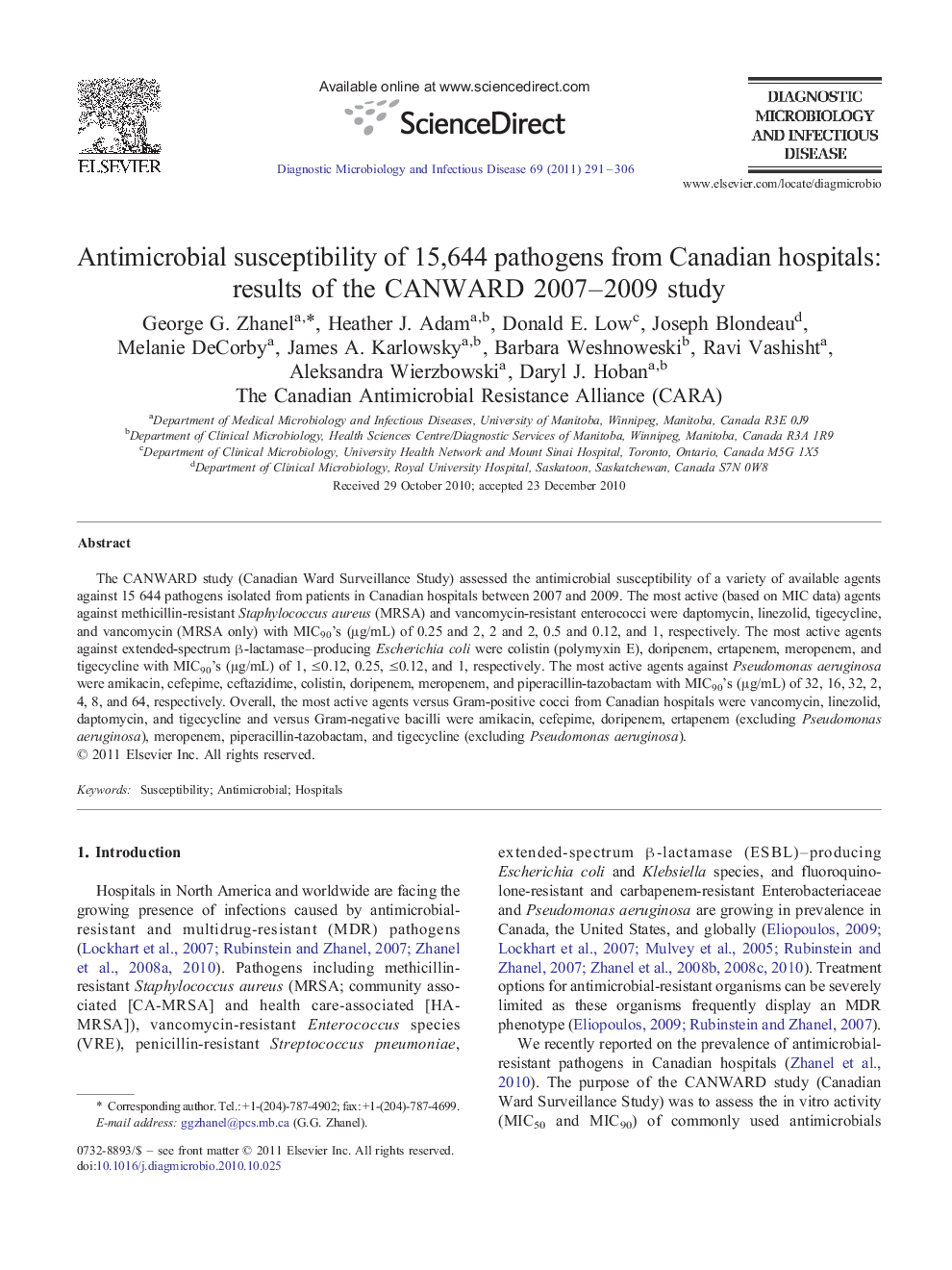| Article ID | Journal | Published Year | Pages | File Type |
|---|---|---|---|---|
| 3347678 | Diagnostic Microbiology and Infectious Disease | 2011 | 16 Pages |
The CANWARD study (Canadian Ward Surveillance Study) assessed the antimicrobial susceptibility of a variety of available agents against 15 644 pathogens isolated from patients in Canadian hospitals between 2007 and 2009. The most active (based on MIC data) agents against methicillin-resistant Staphylococcus aureus (MRSA) and vancomycin-resistant enterococci were daptomycin, linezolid, tigecycline, and vancomycin (MRSA only) with MIC90's (μg/mL) of 0.25 and 2, 2 and 2, 0.5 and 0.12, and 1, respectively. The most active agents against extended-spectrum β-lactamase–producing Escherichia coli were colistin (polymyxin E), doripenem, ertapenem, meropenem, and tigecycline with MIC90's (μg/mL) of 1, ≤0.12, 0.25, ≤0.12, and 1, respectively. The most active agents against Pseudomonas aeruginosa were amikacin, cefepime, ceftazidime, colistin, doripenem, meropenem, and piperacillin-tazobactam with MIC90's (μg/mL) of 32, 16, 32, 2, 4, 8, and 64, respectively. Overall, the most active agents versus Gram-positive cocci from Canadian hospitals were vancomycin, linezolid, daptomycin, and tigecycline and versus Gram-negative bacilli were amikacin, cefepime, doripenem, ertapenem (excluding Pseudomonas aeruginosa), meropenem, piperacillin-tazobactam, and tigecycline (excluding Pseudomonas aeruginosa).
